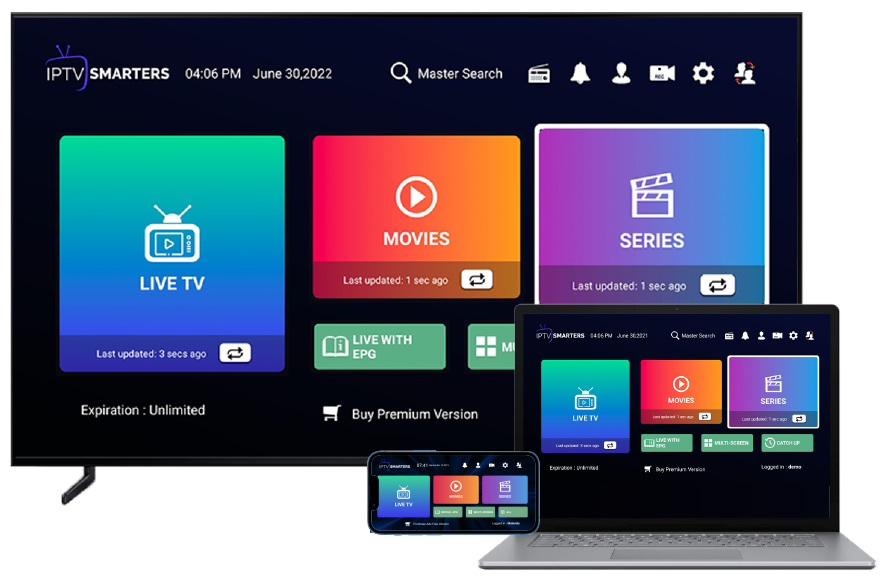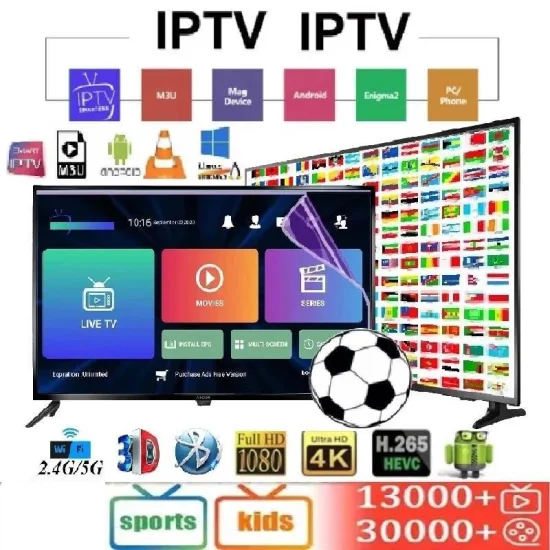Unlock Unlimited Entertainment: Get Your IPTV Subscription Today!
Unlock Unlimited Entertainment: Get Your IPTV Subscription Today!
Blog Article
How IPTV Works: A Step-by-Step Guide to Internet Method Television Technology
Internet Protocol Tv (IPTV) has actually changed the method we consume tv content, supplying a new world of opportunities with the power of the web. Understanding the intricacies of exactly how IPTV functions can shed light on the innovation that drives this cutting-edge form of media shipment. From the basic principles of IPTV to the complex process of material distribution, each step plays a critical duty in making sure a seamless viewing experience. In this overview, we will certainly reveal the underlying systems that make IPTV a fascinating fusion of innovation and amusement.
IPTV Essentials
In understanding IPTV fundamentals, it is essential to grasp the fundamental workings of this technology in supplying television content online. IPTV, which stands for Internet Method Tv, utilizes Web Method (IP) networks to transfer television material to users' tools. Unlike traditional approaches of relaying tv material through cable or satellite signals, IPTV streams media with high-speed net links.

Furthermore, IPTV permits interactive abilities, such as video as needed (VOD) and digital program guides (EPG), enhancing the customer experience by offering more control and flexibility in accessing web content. Generally, understanding the essentials of IPTV sets the structure for discovering its advanced performances and the benefits it supplies to modern tv usage.
Content Shipment Refine
Reliable material shipment in IPTV systems entails a well-structured process that makes certain smooth transmission of television content over IP networks. The web content shipment procedure in IPTV starts with the creation of the video web content, which is after that encoded right into electronic format appropriate for IP transmission.

Middleware Capability
With the integration of middleware, IPTV systems gain improved functionality that enhances user communication and web content monitoring. One of the key features of middleware in IPTV is to enable tailored user experiences by giving functions such as website link interactive program overviews, video-on-demand services, interactive advertising and marketing, and user choices management.

Gadget Compatibility
Offered the pivotal role of middleware in enabling smooth communication and web content administration in IPTV systems, a crucial aspect to consider is the compatibility of devices made use of for accessing the IPTV solutions. Tool compatibility is necessary for making sure a smooth individual experience and ideal performance when accessing IPTV content.
In the context of IPTV, device compatibility describes the capability of a gadget to efficiently communicate with the IPTV solution, show content properly, and sustain the needed methods and codecs for streaming video clip content over the web. Various devices, such as clever Televisions, set-top boxes, mobile phones, tablets, and computer systems, may have varying degrees of compatibility with IPTV solutions.
To guarantee a seamless watching experience, it is very important for users to pick tools that work with the details IPTV solution they are using. In addition, IPTV solution providers must offer support for a vast array visit homepage of tools to cater to the varied requirements of their customer base. By focusing on gadget compatibility, both users and service providers can improve the overall IPTV experience.
Top Quality of Service (QoS)
Considering the vital duty of keeping a high standard of performance and reliability in IPTV systems, guaranteeing consistent High quality of Solution (QoS) stays a fundamental facet of the customer experience. QoS in IPTV refers to the capacity of the system to provide material with very little disturbances, high resolution, and quickly filling times.
Solution providers employ QoS devices such as website traffic prioritization, buffering, and mistake adjustment to preserve a steady IPTV service. By prioritizing IPTV website traffic over much less time-sensitive data, suppliers can ensure smooth playback even during peak use hours. Buffering assists compensate for network fluctuations, while mistake improvement methods enhance data honesty.
Constant surveillance and optimization of QoS criteria are necessary to adapt to transforming network problems and user needs. Eventually, a durable QoS framework is vital for supplying a seamless and delightful IPTV experience to individuals.
Conclusion
In conclusion, IPTV operates with the transmission of tv content over net protocol networks. High quality of Service plays a critical function in keeping the efficiency and dependability of IPTV solutions - IPTV subscription.
Report this page